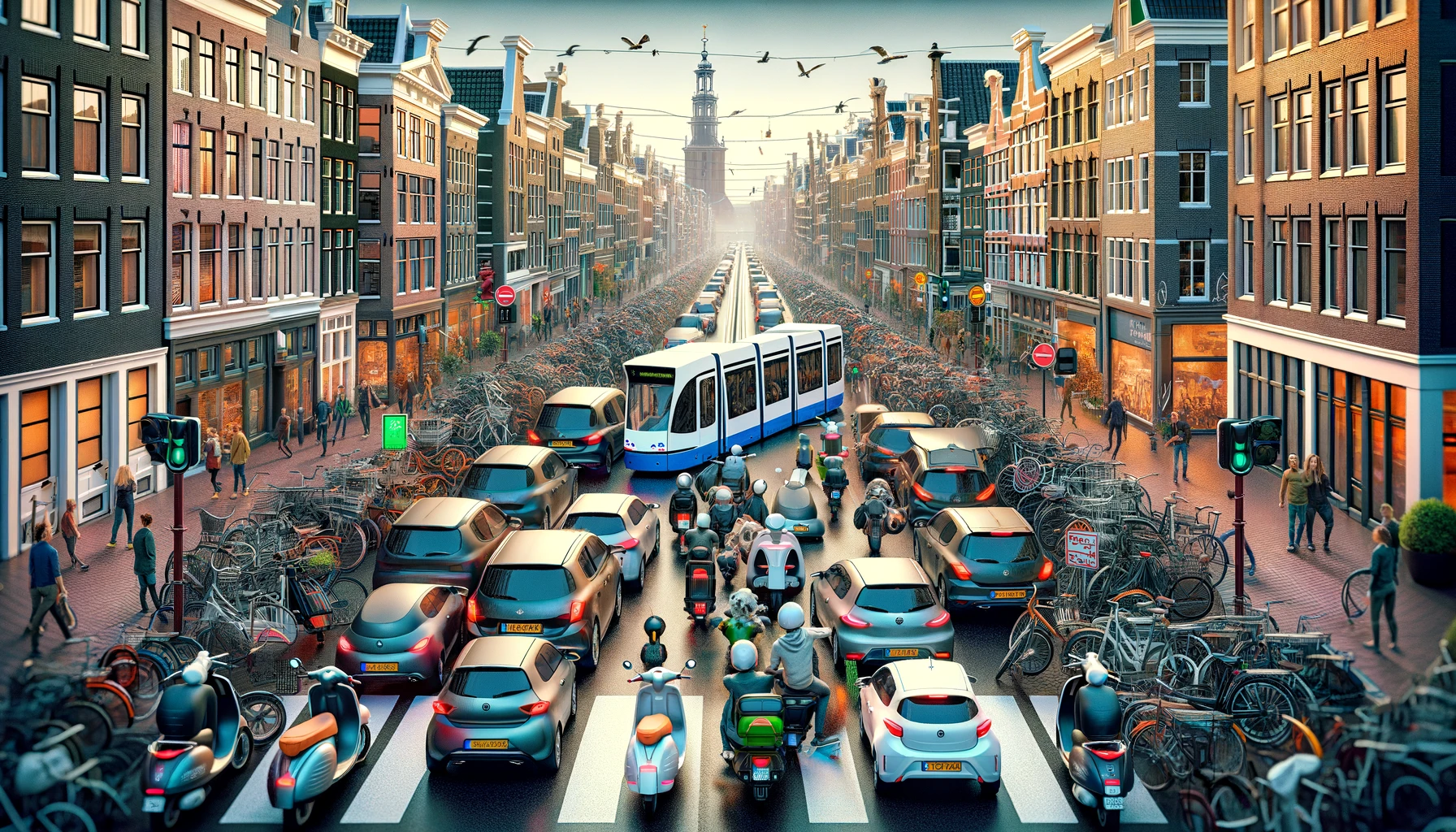Amsterdam municipality’s competition in which the best idea to make cycling “even safer” (and thus more enjoyable according to its Twitter account) could win 16,000 euros is misguided.
For the most pressing problem is not that cycling is not enjoyable enough, but that – especially in the city centre – more and more, bigger and faster ‘bikes’ and ‘scooters’ dominate the roads. Once parked, they also take up more and more of the already scarce public space.
These include electric bikes that go even faster than scooters and cars, bikes that look more like motorbikes (fatbikes) and bikes that look more like transport vans (cargo bikes).
Recently there has also been the Birò, actually a car, but officially a scooter thanks to cleverness on the part of the manufacturer. If the cabinet adopts the announced rules, there will soon be electric scooters, which cause daily accidents and several deaths a year in Paris and may soon be banned.
Inner city becomes a two-wheeler and Birò graveyard
All these vehicles are used by their owners for only a few minutes a day and parked in public spaces for long periods the rest of the time. As a result, the city centre is slowly turning into a two-wheeler and Birò graveyard, leaving less and less space for people. This is the real problem the competition could have been better about. Some suggestions.
First, we need to redefine what a bicycle, scooter, motorbike or car is. A bicycle is a vehicle on which people ride. Two-wheelers with motors, whether electric or not, such as electric cargo bikes, are not bicycles but scooters or motorbikes, depending on their power (with associated helmet, driving licence, insurance and registration requirements).
Motorised vehicles with more than two wheels, such as the Birò, are cars. There are good arguments for including other large large vehicles, such as cargo bikes, in this category.
Create separate lanes
Second, we need more, not fewer, lanes. The ideal and safest design is to create an additional fast lane so that vehicles somewhat similar in speed and size can merge: a Birò and car lane, a fast scooter lane, a slow bicycle lane and a pavement.
Third, it is time to introduce paid parking for all long-term parked vehicles in the city centre. Public space belongs to everyone and is meant for getting from A to B, and not the exclusive property of bicycle, scooter and Birò owners who use public space as a private storage area.
Of course, vehicles should sometimes be able to be parked on the street for short periods of time, such as a short appointment or a small errand. But to stop the trend of Amsterdam’s city centre slowly turning into a junkyard and bicycle dump, all long-term parked modes of transport should be parked indoors (in a car park or car park) instead of on the street during peak hours.
Owners who consider long-term parking of their own vehicle more important than public space for all should compensate the rest of the city, as motorists already do, by paying a small fee in the form of paid parking.
Registration requirement for bicycles
To make this possible, the introduction of a licence plate requirement for bicycles in the city centre is necessary. There are additional advantages: it also makes it easier for the police to act against mass traffic violations and makes bike theft more difficult.
Finally, many more bicycle and scooter parking facilities are needed. Therefore, new buildings should be provided with more parking spaces as standard, and existing public car parks should also create cheap spaces for bikes and scooters. The first few hours of parking could even be free.
The time has come not to make cycling ‘even more fun’, as the City of Amsterdam aims to do with the competition, but to stop the urban competition of who has the biggest and fastest ‘bike’, and ensure that Amsterdam’s transport chaos is addressed so that in the future it will remain possible to move around the city centre at all.
That will ultimately make cycling more fun again.
This opinion article was published in Het Parool.

Leave a Reply